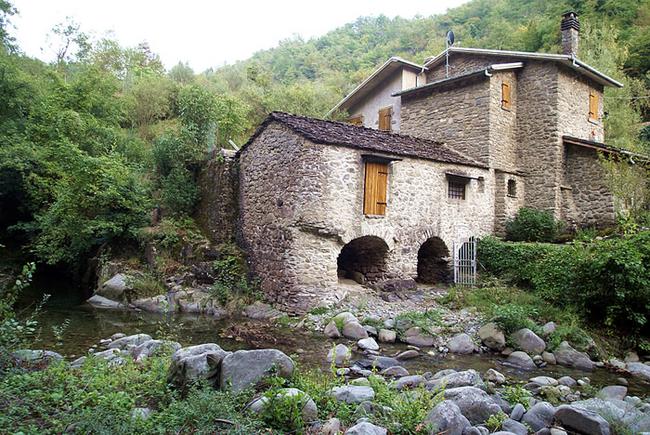
Upper Rocca Sigillina Mulini
Province of Massa Carrera | Region of Tuscany | Italy
Watersource: Upper section of Caprio Creek.
Upper Rocca Sigillina Mulini
Located about 50 airmiles east of Genoa, Italy (in the Liguria Region) in the extreme NW section of Tuscany near the town of Pontremoli.

The mill was working up into the 1960s, but it not on the 1887 census of the area, although it is possible that the surveyor just did not go far enough up the valley since the census shows NO mills in the area, although it is known that there were mills along that stretch of the creek long before the 1880s! The previous owners still live in the village and are well up in age. Their daughter reported that they acquired the mill from the previous owners. The current owner is in her 80s and lives most of the year in Milano. The mill is her summer holiday house. The pool in the creekby the mill is a favorite swimming hole for the local kids.
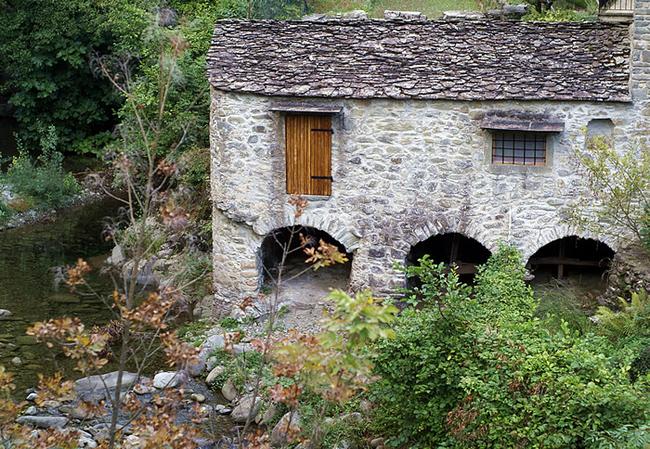
The colors have not changed yet in the valley due to continuing warm weather but the chestnuts started dropping a week ago, about the 1st of October, and the two remaining local drying sheds are already fired up and smoking. In another 35 days the fires will be extinguished and the chestnuts run through ancient belt-driven de-huskers before being hand sorted and loaded into the hopper above the grist wheel. Typically, in this area, if a mill like this one had 3 wheels, two may be for chestnuts and the third generally for wheat (hand-farmed on the slopes of the mountain!) or for maize. This mill is on the southern edge of a wheat growing area centered around Milano and right in the middle of the chestnut growing area on the Appennini range foothills. It operated until 1960and a section of the structure is and was actually living quarters. The second of the water-driven mills in Lunigiana is still active and will begin to operate when the rain needed to swell the creek arrives.
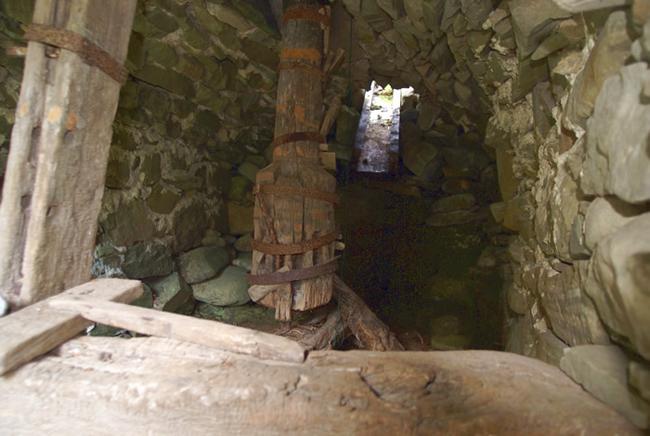
The mill is located at about 700 meters on the upper section of Caprio Creek (torrente in Italian because torrents of rainfall were needed to enable the creekflow to be sufficient for operation)) next to the village Rocca Sigillina which, during the middle ages, was a border portal on the pilgrimage route known as the Via Francigena. The pictures shows what is left of the waterwheel. It appears to be a vertical axle for a tub wheel.
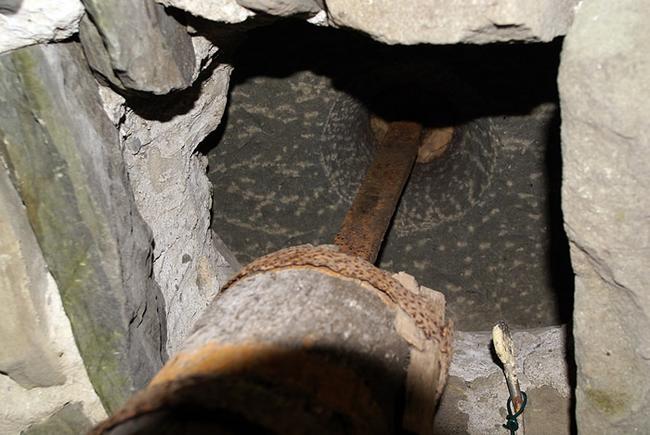
The axle shaft disappearing up into the set of grind stones or mecina. Lunigiana background: A little strip of Tuscany largely undiscovered by foreigners and even most Italians. It is a kind of forgotten corner of a famous and important province. Lunigiana has always been relatively poor compared to the rest of Tuscany with few precious natural resources apart from the marble found in the southern area of the zone. Today its top local claims to fame are Porcini mushrooms, chestnuts and related products, wild boar dishes, testaroli pasta, a high concentration of crumbling old castles, clean water, quirky neglected villages dating to the middle ages and small towns that have hardly changed since the 1930s.
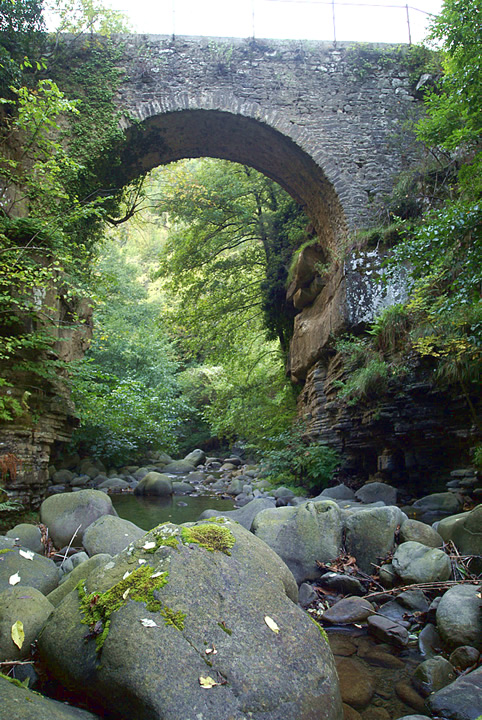
The old arch bridge connecting the mill and the village. There is also an important spring on the property that used to be the main source of drinking water for the village so a reliable path across the stream was necessary.
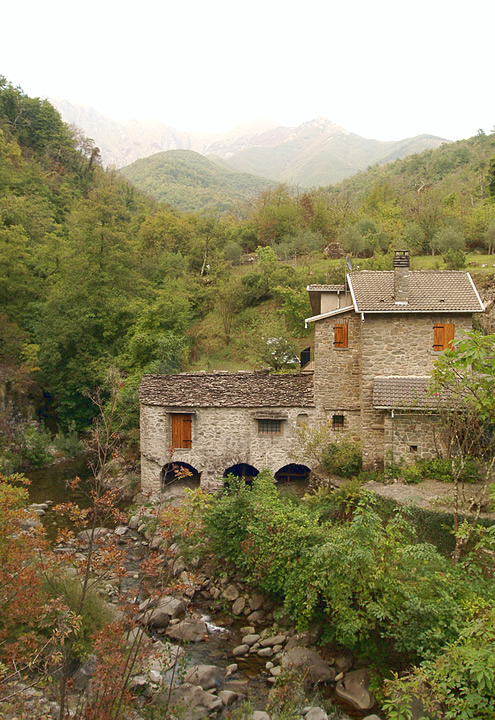
Rocca Sigillina: The highest village on the the Caprio creek basin. The "Rocca" refers to the fortified village and octagonal tower (long since fallen) at the top of the village that was built along a steep-sided ridge on the foothills of the Alpennini Range of mountains that separates the state of Parma from Tuscany. In the 1960s the official population of the village was around 350. Today there are maybe 20 year-round residents, most of whom are retired, many of which have more than 85 years to their credit(my 93 year old neighbor is still out working his crops every day). Despite the median age, most of the tillable land in and surrounding the village is cultivated and well tended. Nobody uses pesticides on their plants but do so only out of habit and a desire for clean food. The word "organic" is never heard mentioned in the village.

Mr. Edward Armstrong, the source of this mill info and pictures, would like to promote his area of Tuscany to those that might like to know more about its mills and the general area for visiting. You may contact him at: armpick@yahoo.com